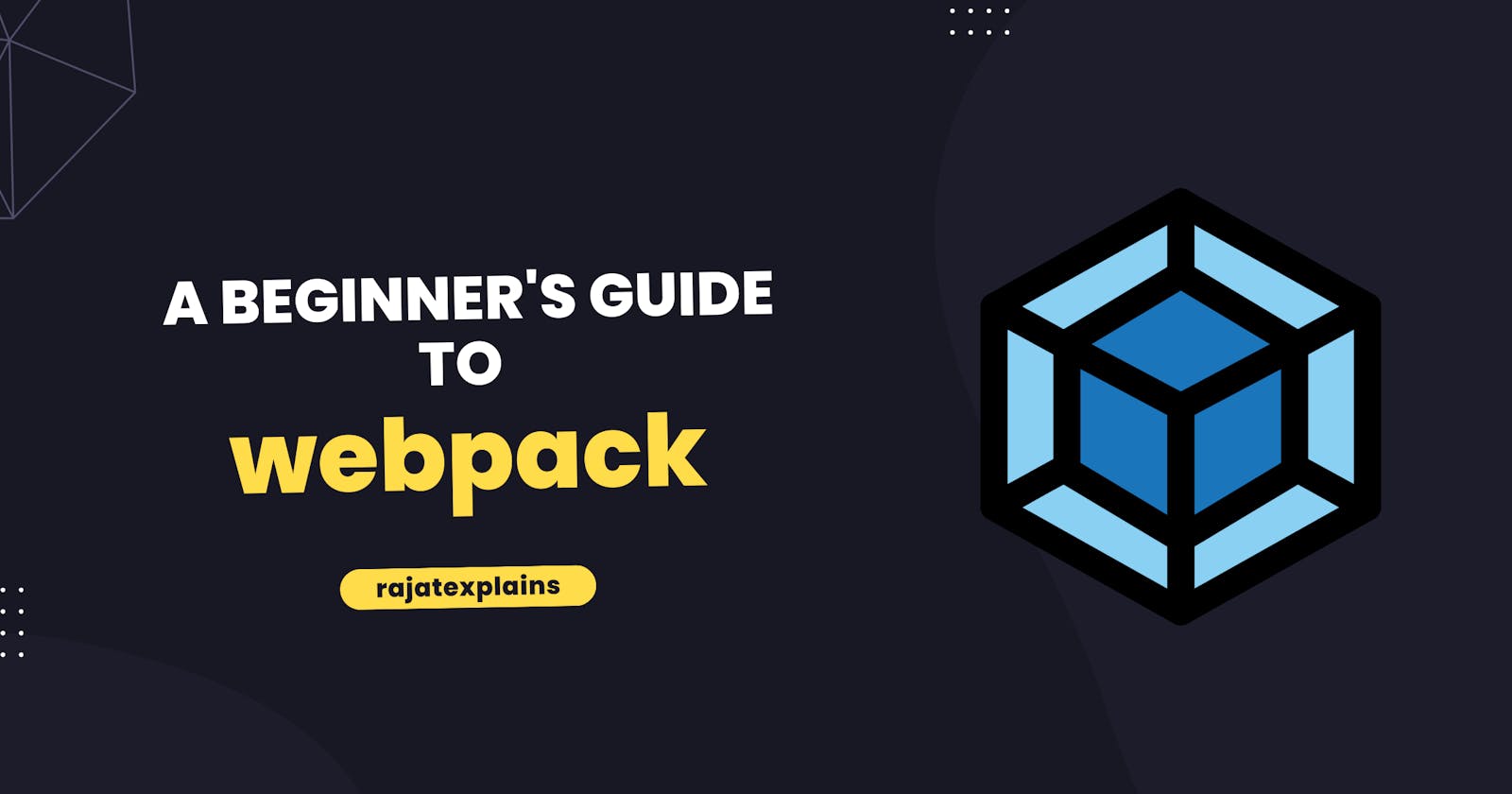When building modern web applications, developers often work with complex Javascript codebases that are split into multiple files, each containing specific functionalities. Managing these files and dependencies efficiently is crucial to ensure a smooth and performant web experience. This is where Webpack, the popular module bundler, comes into play. In this blog post, we'll simplify the concepts of Webpack and explain how it streamlines the process of bundling modules effectively.
What is Webpack?
Webpack is a powerful open-source Javascript module bundler that takes various assets, such as Javascript, CSS, images, and more, and converts them into optimized bundles for deployment. It traverses your application's dependency graph to understand which modules depend on others and bundles them accordingly. This results in a single or multiple bundled files that can be loaded by a web browser.
Webpack works with a "configuration-first" approach. This means you define a configuration file (webpack.config.js) that specifies how Webpack should process your application's assets. The configuration includes entry points, output settings, loaders, plugins, and more.
Core Concepts
To understand how Webpack works, you need to grasp some fundamental concepts. So, let us dive right in:
1. Entry Points
An entry point is the starting file or files where Webpack begins building the dependency graph of your application. It is specified in the Webpack configuration and serves as the root of the entire bundling process. From the entry point(s), Webpack traverses the dependency tree to gather all required modules.
2. Output
The output is the result of the bundling process. It defines where Webpack should save the bundled files and how to name them. You can specify the output path and filename patterns in the configuration. Webpack generates the final bundles based on these settings.
3. Loaders
Loaders are a vital part of Webpack as they allow it to process different types of files. Since Webpack natively understands only Javascript files (ES6 and later), loaders enable it to handle other file types such as CSS, SCSS, images, and more. Each loader transforms the corresponding file type into valid Javascript, making it possible to bundle everything together. For instance, babel-loader is commonly used to convert modern Javascript to an older version that is compatible with a broader range of browsers.
4. Plugins
While loaders handle individual files, plugins perform more advanced tasks during the bundling process. They can be used for various purposes, such as code optimization, asset management, and environment setup. For example, the HtmlWebpackPlugin is commonly used to generate an HTML file and inject the bundled scripts automatically.
5. Mode
Webpack introduces a mode configuration option, which can be set to either "development," "production," or "none." This setting enables Webpack to apply built-in optimizations for the chosen mode. For instance, in production mode, Webpack will minify the code and remove unnecessary parts, resulting in smaller and faster bundles.
Webpack Workflow
Identify Entry Points: Determine the entry point(s) of your application in the Webpack configuration file. These entry points are the starting locations from which Webpack will build the dependency graph.
Traverse Dependency Graph: Webpack traverses the dependency graph, identifying all modules and dependencies required by the entry points.
Loaders Transformation: When processing modules, Webpack uses appropriate loaders to transform non-Javascript files into valid Javascript modules.
Bundle Creation: After processing and transforming all modules, Webpack creates optimized bundles according to the specified output settings.
Plugins Processing: During the bundling process, plugins can perform additional tasks like minification, generating HTML files, or handling environment variables.
Final Output: Webpack generates the final bundled files, ready to be deployed to a web server or included in an HTML page.
Conclusion
Webpack is a powerful and essential tool in modern web development. Understanding its core concepts, such as entry points, output, loaders, plugins, and mode, empowers developers to effectively bundle and optimize their applications. By simplifying the management of dependencies and assets, Webpack greatly enhances the performance and maintainability of web projects. Now that you have a simplified understanding of Webpack, you can confidently leverage its capabilities to build efficient and scalable web applications.
Happy coding!
If you liked what you read 🧑🏫 and got to learn new things, do hit like 👍 and subscribe 🔖 to my newsletter to get instantly notified whenever I drop in new content.
And don't forget to follow 🚀 me on
Hashnode - Rajat Jain
Twitter - @rajatexplains
Instagram - @javascript_to_the_rescue
LinkedIn - Rajat Jain

